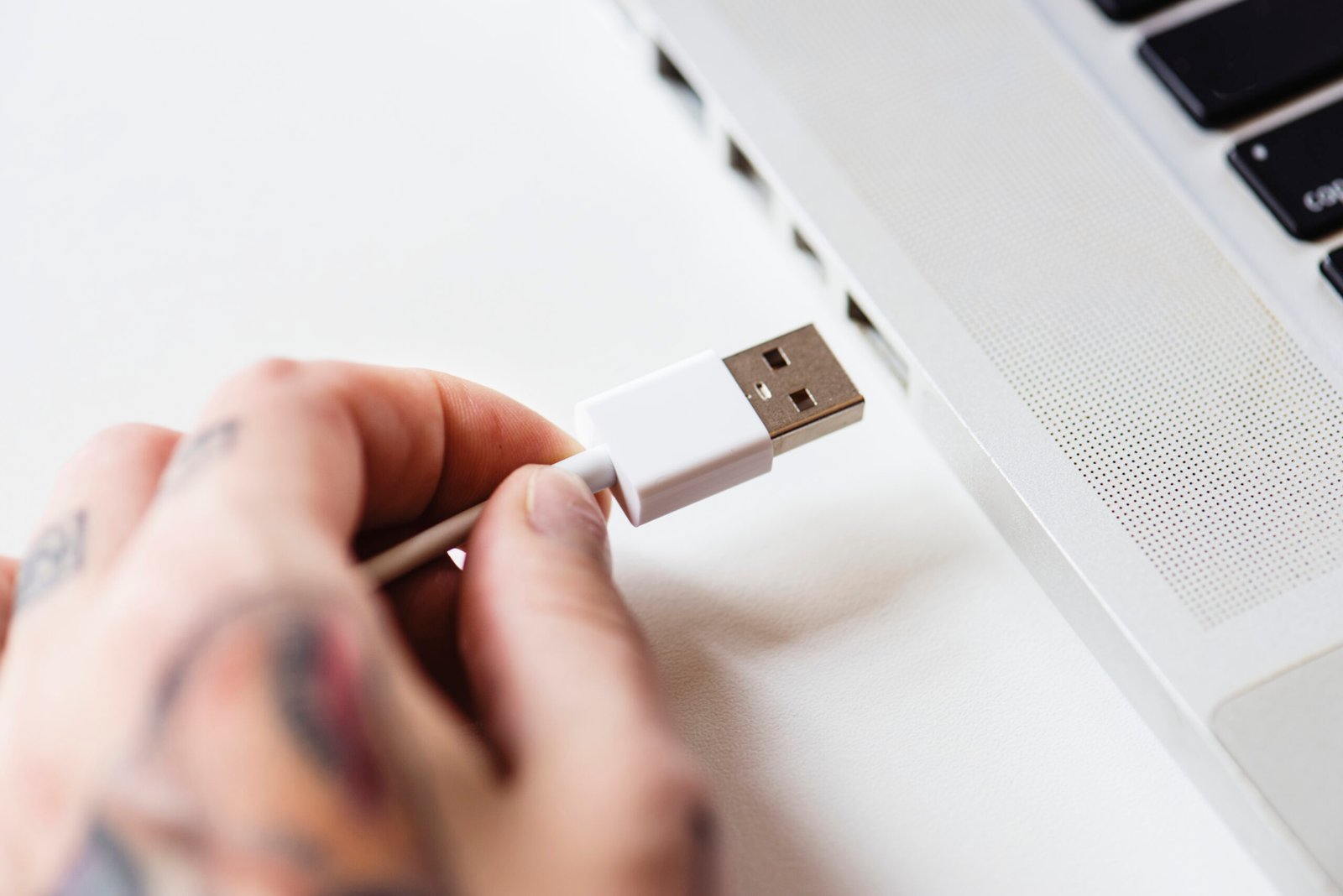What is “usb 3.0 cable”.

Third generation of USB technology is Universal Serial Bus 3.0, short “usb 3.0 cable” Originally launched in 2008, it transformed our connection, data transport, and power device running capability. Designed to satisfy the rising needs of contemporary technology, “usb 3.0 cable” presented a major speed and efficiency improvement over its predecessors. Faster data transfers, enhanced device interoperability, and a simplified technological experience this development delivered for tech aficionados, gamers, and businesspeople.
Still, what distinguishes “usb 3.0 cable” Beyond only being speedier, it marks a progress in universal connectivity, enabling flawless interaction between devices, which is essential in the fast-paced digital age of today.
How Does “usb 3.0 cable”Differ from Earlier Versions?
One of the first things consumers who wish to upgrade their devices consider is how USB 3.0 compares to prior versions such as USB 2.0 and USB 1.0. These significant differences explain why USB 3.0 has become the standard for many.
Speed and Efficiency
- USB 1.0:Starting modest with transfer speeds maximuming at 12 Mbps.
- USB 2.0:coined the phrase “high-speed” with transfer rates reaching 480 Mbps.
- USB 3.0: With a shockingly 5 Gbps transfer speed—10 times quicker than USB 2.0—you elevate it.
Even for massive files like games, 4K videos, and copious of backup data, this great speed increase guarantees seamless file transfers.
Backward Compatibility
USB 3.0 keeps compatibility with earlier USB versions unlike many new technologies. This allows you to put USB 2.0 or 1.0 devices into a USB 3.0 port, therefore guaranteeing simple adoption across systems and devices.
Power Management
Faster charging of gadgets including tablets and cellphones is made possible by USB 3.0’s higher power output. It also uses less energy, which qualifies as an energy-efficient choice for linked devices.
For background, USB 2.0 removes the aggravation in just a few minutes if you have ever had to wait hours to move a 10GB file. Imagine now that efficiency over thousands of everyday chores is expected.
What Are the Features of a “usb 3.0 cable”?
The USB 3.0 cable stands out from its equivalents in numerous crucial ways.
Physical Features
- Additional Pins: Nine pins on USB 3.0 cables compare to four on USB 2.0 cables. This permits simultaneous power delivery and faster data rates.
- Blue Color Coding: Usually blue, USB 3.0 cables are easy to spot at a look.
Data Transfer Capabilities
The most remarkable characteristic of the 5 Gbps data transfer rate is Moving HD movies, games, or backups using USB 3.0 is easy and almost quick. Its dual-bus design also allows simultaneous two-way data exchange, a major development over USB 2.0.
Backward Compatibility
Though the speed would be limited to the older standard when connected to older devices, USB 3.0 guarantees that its cords operate with USB 2.0 and USB 1.0.
Simply said, USB 3.0 connections are made to satisfy the growing needs of modern computer consumers and their highly linked life.
How Does “usb 3.0 cable”Benefit Different User Groups?
Tech Enthusiasts
USB 3.0 presents the tools required for tech buffs to investigate innovative technologies. USB 3.0 guarantees effective and hassle-free experience whether you’re running high-performance external drives or moving big files.
Gamers
USB 3.0 technology helps gamers tremendously. High-speed networking is crucial for many gaming devices including controllers, headphones, and external hard drives. Load times are reduced with USB 3.0, and slow data transfer-caused in-game lags are history.
Business Professionals
Fast data transfers for big presentations, backups, and team work let USB 3.0 meet the needs of business professionals. While cloud storage could be a solution, quick and consistent offline data management guarantees continuous production.
From streamlining professional processes to providing better gaming sessions, USB 3.0 is absolutely essential for several user groups.
How to Select the Best “usb 3.0 cable” Cable?
Given the range of USB 3.0 cables, selecting one can be daunting; but, here are some useful guidelines to help you decide which one to use.
- Determine Your Needs
- Are you charging a smartphone or shipping big files?
- Verify whether the cable meets your particular use case—power delivery or data transfer.
- Check Cable Quality
- Search for robust materials to resist wear and tear, such as braided nylon.
- Length Matters
- Although longer cables are handy, occasionally they cause slowed down speed. Think about a length that will fit your arrangement without sacrificing performance.
- Certified Cables
- Choose cables verified by credible regulating authorities such as USB-IF to prevent compatibility problems.
Knowing your needs and giving quality top priority will help you to guarantee that you are buying a USB 3.0 cable with best performance.
What Are the Real-World Applications of”usb 3.0 cable”
USB 3.0 has become somewhat important as it has entered several sectors and daily situations.
Healthcare
USB 3.0 helps imaging and diagnostic equipment medical professionals use. In high-stress situations, the ability to rapidly move massive medical information including MRIs is absolutely vital.
Creative Industries
For fast transfer of 4K video files and high-resolution photos, graphic designers, photographers, and video editors depend on USB 3.0.
Education
Universities employ USB 3.0 for simple exchange of vast academic datasets as well as for simplified data storage in research.
USB 3.0 is revolutionary whether working professionally or at home.
Common Misconceptions About “usb 3.0 cable”Cables – Debunked!
Myth 1: Older systems are incompatible with USB 3.0 cables.
- Truth: USB 3.0 completely backwards compatible with USB 2.0 and 1.0 devices.
Myth 2:Every USB 3.0 cable is same.
- Truth: Not all cables are made equal; certifications, materials, and length greatly affect things.
Myth 3: Only for techies are faster speeds clearly observable.
- Truth:Anybody multitasking or moving big files will value the distinction USB 3.0 provides.
Knowing these facts helps people to make wise judgements and rediscover the worth of their USB 3.0 connections, therefore clearing the air.
Maintaining and Protecting “usb 3.0 cable” Cables
Proper maintenance is essential to ensure the longevity of your USB 3.0 cable.
Tips for Maintaining Cables
- Avoid Bending: Sharp bends can compromise internal wire. Cable organisers help to avoid needless tension.
- Keep It Clean:Dust accumulation can compromise relationships. Check the connectors often using a soft cloth or pressurised air.
- Store Safely:Steer clear of tangling or storing cables in small areas; this will over time deteriorate the material.
With a little care, your USB 3.0 cable can last for years, maintaining peak performance.
What Does the Future Hold for USB Technology?
Although USB 3.0 presents revolutionary breakthroughs, the technical development is not stopping here. With speeds up to 40 Gbps and improved power economy, innovations including USB 3.1, 3.2, and USB 4 promise to transform connectivity.
USB technology drives innovation and opens more opportunities for consumers in many different sectors than it only provides cords.
What Makes “usb 3.0 cable” Must-Have in Modern Tech?
USB 3.0 has firmly established its indispensible role in contemporary technology. It meets the needs of tech aficionados, gamers, and business leaders equally with unparalleled speed, adaptability, and dependability.
From streamlining processes to improving gaming sessions, USB 3.0 changes your interaction with your connection to your devices. Enquiring about adding USB 3.0 to your configuration? It could be the improvement you were unaware you needed.


